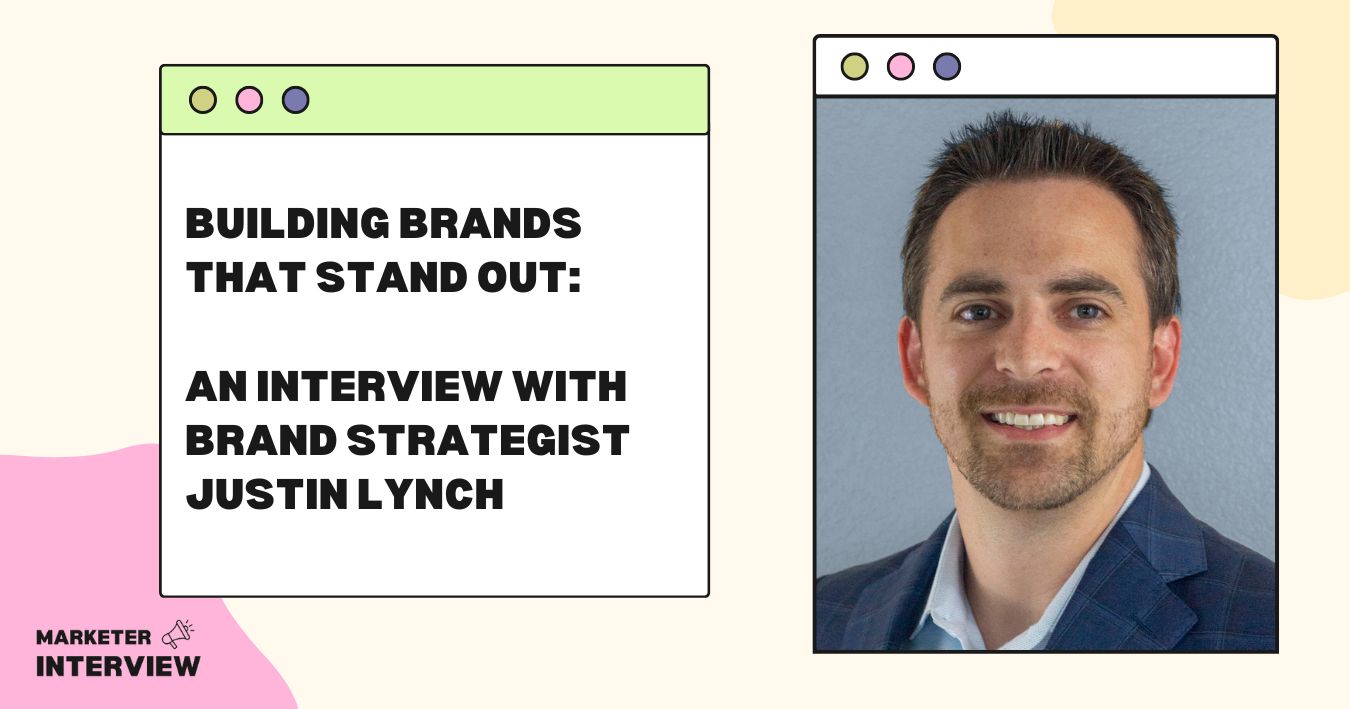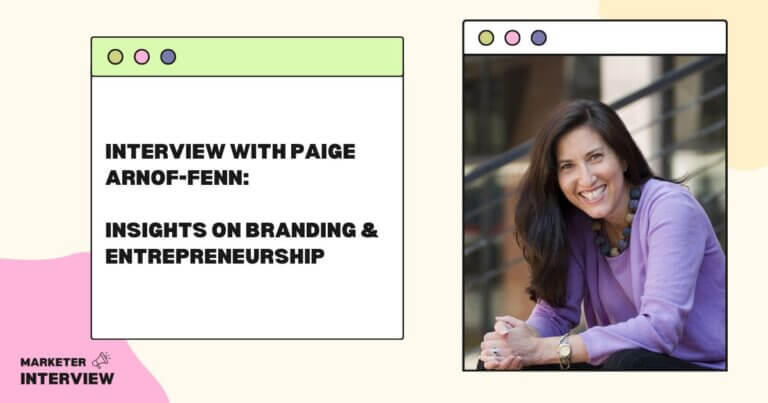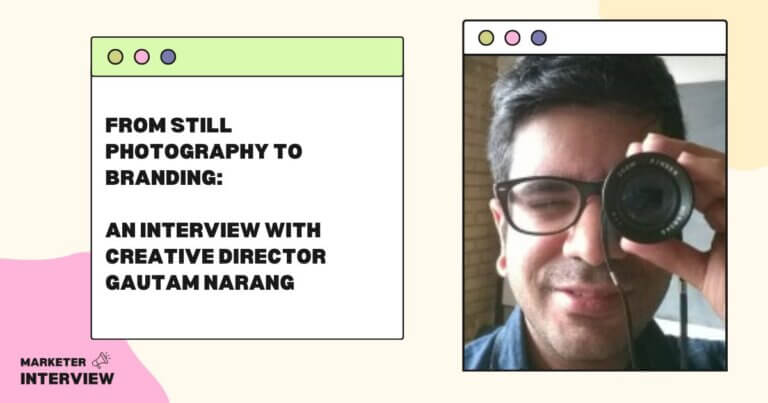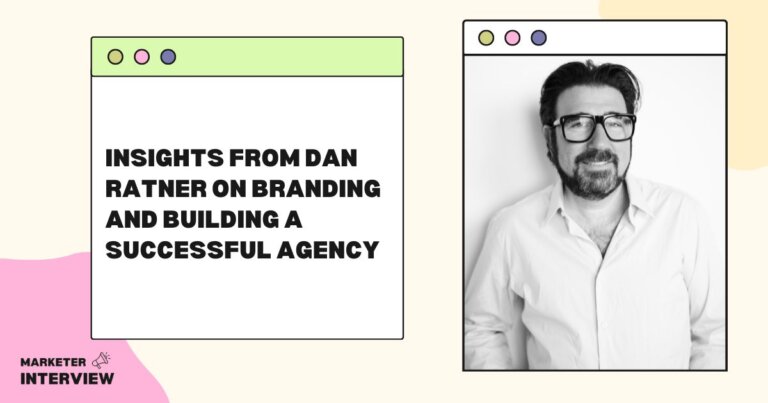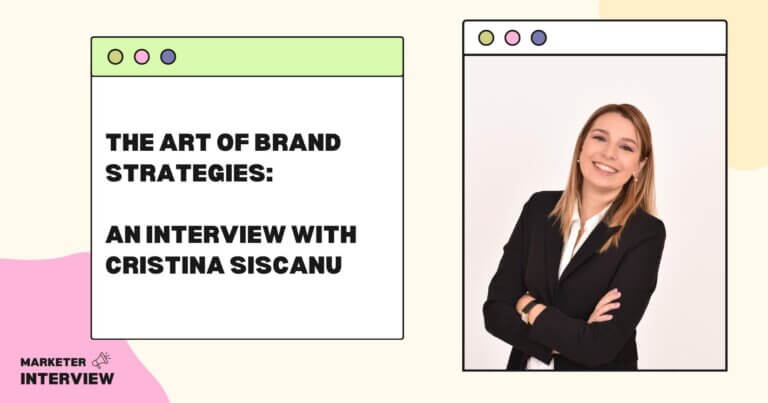Building Brands That Stand Out: Brand Strategist Justin Lynch
In this interview, we’re talking to Justin Lynch, a branding expert and copywriter with over a decade of marketing experience.
Justin founded Avlier, a company that provides the resources and consultation needed for marketers to execute their brand vision.
Throughout his career, Justin has worked with various businesses, from startups to billion-dollar credit unions, and has won awards for his exceptional work.
We’ll discuss Justin’s career journey, his expertise in branding and copywriting, and the tools and software he uses to make it all happen.
Contents
- 1 Can you tell us about your journey into the world of marketing?
- 2 What inspired you to focus on branding and copywriting?
- 3 How do you approach developing a brand strategy for a new client?
- 4 Can you share a particularly challenging branding project you worked on?
- 5 What are some common mistakes businesses make when it comes to their branding?
- 6 How do you measure the success of a branding campaign?
- 7 What are the exciting new trends or developments in the branding industry?
- 8 How do you incorporate copywriting into your branding strategy?
- 9 What tools and software do you rely on to help you do your job effectively?
- 10 What advice would you give to someone interested in pursuing a career in branding and copywriting?
Can you tell us about your journey into the world of marketing?
Sure! Like many marketers I know, my career did not begin in marketing. It started in the video game industry.
I worked as a Project Manager for a small indie game studio for the first 3 years of my career. Since we were a small company, I was in charge of marketing the games, creating ads, and creating the company website. It was trial by fire.
I then moved to Houston, TX, and shifted my focus to graphics design, where I worked on one of the 2016 US Presidential campaigns. That was where my understanding of marketing changed forever.
It was impressive to see and learn how marketing was done nationally. However, I learned I was not a fan of politics and moved over to a local credit union as the primary Graphic Designer.
Finally, I left my job at the credit union and started my own business, where I shifted from graphics design to corporate branding. I now work with businesses to establish their brand’s strategy, voice, visuals, and positioning in their chosen market.
What inspired you to focus on branding and copywriting?
Being a Graphic Designer is a lot of fun, and you get to create many cool designs. But it’s a tactical job. You rarely assist in the strategic planning of a campaign.
As I continued to create designs for clients, I grew frustrated with my ability to impact the result of a campaign. Creating great designs only goes so far if the underlying strategy is poor.
If I wanted to make a more significant impact on my clients, I needed to be able to help them shape the strategy of their marketing initiatives. And the best way to do that was through Branding.
So, I shifted my services and now work with clients to identify and resolve challenges with their brands. The two most common branding challenges I’ve found are consistency and messaging (which is where copywriting comes into play).
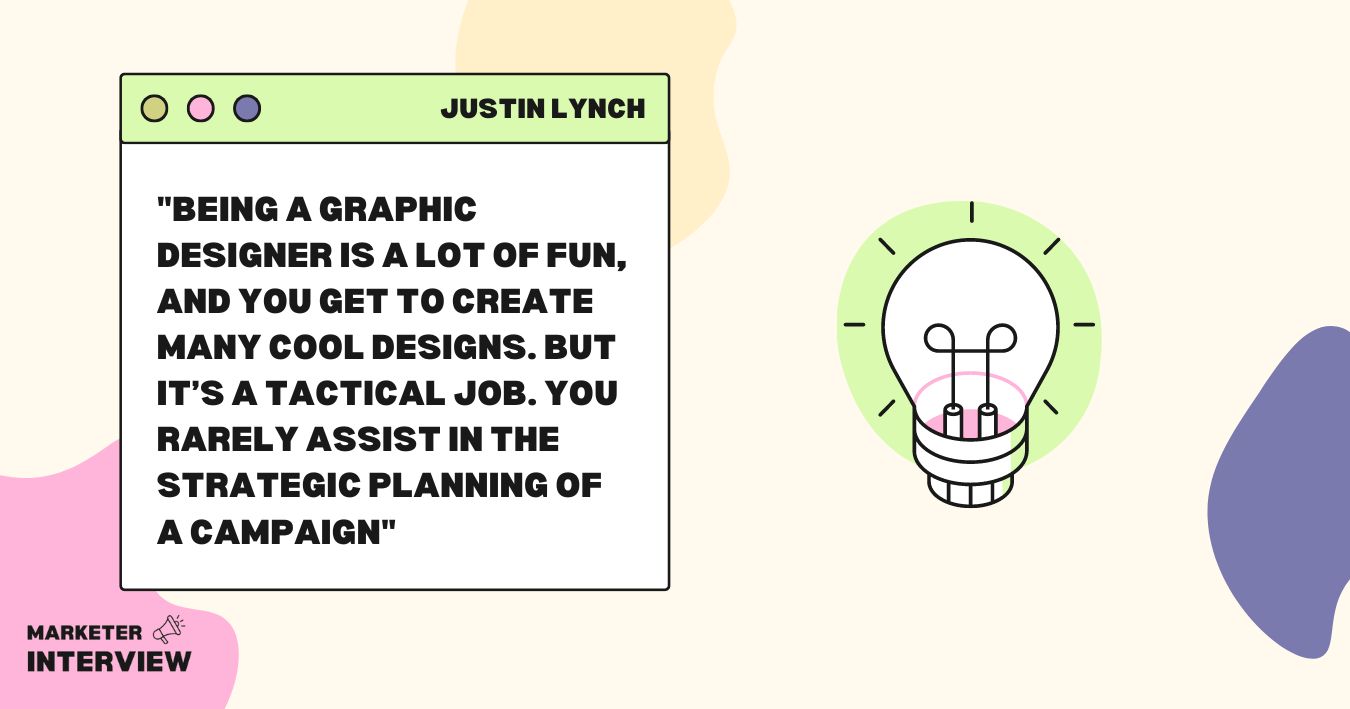
With the right mixture of solid brand strategy and strategic messaging, I’ve found that most businesses can significantly improve their marketing efforts.
What sets me apart is how I approach branding. It’s a straightforward, no-BS process with an emphasis on respecting the time of my clients.
I don’t like building target personas and other traditional branding systems. You’ll never hear me ask, “If your brand was a celebrity, who would it be and why?”
Instead, my approach focuses on maximizing the brand’s ability to connect and create loyal customers. I’m sure my time in the video game industry influenced how I think about customer experiences as they interact with a brand.
How do you approach developing a brand strategy for a new client?
Developing a brand strategy means starting at ground level and working our way up. The first step is not even related to the brand. It’s about the goals of the business.
You first need to establish what goals the business is trying to achieve. These goals act as a guidepost when building out the brand strategy. If a potential option or opinion does not align with the business’s goals, it should not be considered.
After your goals, you need to define your ideal customer. This type of customer is easy to work with, spends a lot of money on your services, and will advocate for your brand.
The best way to approach this step is to think about current customers you have that you would love to have more of. Then think about that customer, their desires, and the transformation your services provide.
Finally, it’s essential to review the current brand strategy. Save the parts of the current strategy if they align with the business’s goals and would attract your ideal customers. Everything else should be removed.

Now you have a solid foundation to start building the new brand strategy. Here are the topics you need to cover when developing the strategy:
- Brand Purpose: Does your brand convey its purpose, and is it easy to understand?
- Brand Positioning: How well does your brand position itself compared to your competitors?
- Brand Differentiator: What is your unique selling proposition, and how does it differ from others?
Don’t forget everything about this new strategy needs to meet the following criteria:
- Aligns with the business’s goals
- Attracts your ideal customers
One of the most challenging projects I’ve worked on was a rebranding for a home remodeling company.
They had been in business for a while and established a positive reputation. However, they wanted to shift who their ideal customers were.
Their current customers were homeowners looking to remodel a single room. Those were still great, profitable projects, but they needed to secure whole home remodels to scale their business.
This meant the new brand would need to convey the positive values and reputation of the old brand but resonate and attract a different type of client. In other words, we needed to establish a new foundation for the brand.
We started by walking the customer through a brand workshop. During the workshop, we helped the client define the ideal customer they wanted to attract. We also discussed the new brand’s purpose, positioning, and differentiators.
From there, we went through the typical rebrand process: logo design, color palette, typography, etc. Finally, we used the information from the brand workshop to inform our designs for the new brand.
However, we worked with the client to perform an overnight brand launch when launching the new brand. This meant their website, social accounts, business cards, etc., were all updated simultaneously. Ensuring everything would be ready simultaneously was a logistical challenge, but we aligned it.
When a business updates its brand, it leads to questions from customers: Was the business acquired? Why change? Will they continue to provide the same services?
To help inform customers and answer their questions, we created a new page on the website that explained the redesign journey and why it was undertaken. We then placed a banner at the top of the website to inform customers about the rebrand and linked them to this new page.
The client told us afterward that the new page was a huge success, and customers mentioned how it helped answer some questions when they noticed the brand had changed.
What are some common mistakes businesses make when it comes to their branding?
From what I’ve experienced, the most common mistakes fall into these three issues:
- Thinking branding is simply logos and colors
- Developing brand visuals before the brand strategy
- Not understanding their customers
The first issue is one I see less and less of today (thankfully). But, there are still some businesses out there who don’t understand that branding goes beyond your logo design and brand colors.
The second issue is prevalent, especially for new businesses. Since the brand’s visuals are front and center, many businesses put a lot of time and resources into that part of their brand. However, great brand visuals only work if you’ve first done the proper strategic planning.
The best way to avoid those two issues is to read books or blog posts about brand strategy. You’ll learn how all strategic brand elements (purpose, positioning, differentiator, etc.) inform all brand aspects.
The third issue is the most common one, and it’s the most dangerous one to make.
If your business needs to understand its customers, no amount of branding will help. To avoid this issue, you need to talk to your best customers.
You want information from them so you can answer the following questions:
- First, what are their desires as it relates to your business?
- Second, what are the roadblocks/struggles preventing them from obtaining those desires?
- Third, what motivates them to seek out your services?
- Fourth, what are the decisions they make when purchasing from you?
- Finally, what are they looking to become when purchasing from you?
Once you’ve talked to customers, you must define your ideal customer.
When you define your ideal customer, focus on the psychographics (the whos, whys, wheres, and hows) over demographics (age, gender, location, education level, etc.). Doing so will guide you to ensure your brand resonates with your ideal customer.
How do you measure the success of a branding campaign?
Measuring the success of a branding campaign can be difficult because your brand is intertwined with all aspects of the company.
So, when your brand is strong, things are more manageable. However, when your brand is struggling, it makes everything feel like a slog.
This means you can get a broad sense of how your brand impacts the business, but it doesn’t provide the clarity needed to say confidently that your brand is directly influencing an aspect of the business.
The other problem is that most common KPIs are influenced by additional factors outside traditional ‘branding efforts.’ For example, customer acquisition costs result from your brand, ad spending & strategy (which is influenced by the competitiveness of your market), and your sales process.
However, there are 6 metrics I like to use since you can isolate the data directly to your branding efforts.
Note: Some of these are not relevant to every business
Brand Recognition and Recall:
- Brand Recognition is the ability of a person to associate your brand’s visuals with your brand – whether it’s your logo, colors, or visual style.
- Brand Recall is the ability of a person to remember aspects of your brand when prompted. Pop quiz: What’s the slogan for Nike? That’s Brand Recall in action.
Measuring brand recognition requires surveys and market research. So, it’s not the most straightforward metric to track, but it is 100% influenced by branding initiatives.
Branded Search Results:
For this one, you’re tracking if customers are searching for the business’s name and the name of any products/services.
Simply use a free service (like Ubersuggest) and type in your company’s name. You’ll see the number of searches each month for your name. Most services will also show how the search volume has changed over time.
Customer Lifetime Value:
Customer lifetime value (CLV) is an excellent measurement of your brand because customers don’t make repeat purchases and increase spending with brands they don’t like.
In addition, only two significant factors influence CLV: your brand and your prices. So, if adequately tracked price increases, you can isolate your brand’s impact on this KPI.
Average Purchase Price:
Customers who love the services/products you offer will often purchase more at the time of purchase. Think about the brands you love. Do you tend to purchase more with those brands over time, especially as your brand loyalty increases?
This is why average purchase price (APP) is another metric influenced directly by your brand. In the end, most customers have a spending tolerance for the product/service you’re providing, and the only way they’ll spend above that is if they place value in the brand itself.
Referral Close Rate:
How often do customers generate a referral when you ask for one?
Your RCR will only be affected by two things: your brand and your referral strategy. So if you keep your referral strategy the same over a given time, you’ll be able to see how your branding efforts influence this close rate.
Positive Mentions on Social Media:
Another way to track advocacy is to track how often people positively mention your brand on social media. The key word is ‘positive.’
This does make it more difficult to track because you have to find a way to sort mentions into negative or positive (or you can add a neutral category as well).
Just like referrals, customers will only leave positive mentions on social media if your brand indeed impacted them.
What are the exciting new trends or developments in the branding industry?
Sure! There are two trends I’ve been watching that I think will have a significant impact on how businesses handle branding.
The first is a shift towards customer-focused messaging. Businesses are starting to talk less about themselves and their services and instead making their messaging focused on the customer.
The second is the elephant in the room now (Spring 2023): AI. Some love it. Some hate it.
Regardless, everyone has an opinion on it. Since we’re still in the ‘early adoption’ phase of AI, knowing how everything will shake out is impossible.
But this is where I see it impacting branding and copywriting.
Currently, most AI can generate content that sounds decent, but it’s uninspiring.
This will create a trap many businesses will fall for. They’ll generate a lot of AI content, apply it to their website and marketing materials, and then call it a day. But, unfortunately, in doing so, they’ll kill their brand’s personality.
However, AI can be beneficial if businesses use it for the following:
- Help you assess the tone of your copy: Make sure all of your copy has a consistent tone
- Summarize customer feedback and have it identify the most common phrases: You can use these phrases in your copy and marketing materials.
- Ask it to phrase copy in a specific tone: If you’re struggling to find a way to phrase something, AI can give you a few suggestions.
How do you incorporate copywriting into your branding strategy?
Copywriting comes in towards the end of establishing a new brand strategy. We must first establish the brand’s purpose, position, and differentiator. Once those are defined, the focus shifts toward brand messaging and tone.
When working on the brand messaging and tone, we pull from copywriting best practices:
- Knowing your intended audience
- Establishing a consistent tone
- Using language that resonates with the intended audience
To keep a cohesive brand message, we note the tone, style, and common terminology that should be used for all copies.
What tools and software do you rely on to help you do your job effectively?
I use a few tools daily or, at a minimum, a few times each week.
Creative Cloud:
If you work in any creative field, you likely have a subscription to Adobe Creative Cloud. I use Photoshop, InDesign, and Illustrator almost daily, so I need access to those programs 24/7.
Some great alternatives are out there, but they don’t have the exact feature set I need to convince me to switch. So, I don’t see myself moving away from Creative Cloud anytime soon.
Loom:
Loom is an excellent way for me to walk through designs and strategies with clients in a way that is convenient for them. I simply record the video and share the link with them. Then they can watch it independently, and I don’t have to spend countless minutes writing a long email.
ChatGPT:
ChatGPT has allowed me to evaluate the tone of copy quickly as I write. It also does a great job of summarizing copy, which helps me ensure the main points of the content are being recognized.
What advice would you give to someone interested in pursuing a career in branding and copywriting?
It’s a lot of fun and rewarding but also a lot of work and requires a non-stop thirst for learning.
If you want to be effective at branding and copywriting, there are two main areas you need to understand:
- Human Psychology
- Current Trends
Human psychology is a secret weapon great marketers use all the time. However, it’s a vast subject with many different subfields.
So, when it comes to human psychology, you need to know as much as you can about:
- Why do people buy things
- How color, words, and tone influence the subconscious
- How people read content and process information
You need to be aware of current trends. You don’t need to (and often shouldn’t) pursue every new trend, but you should still be aware of them. Even if your business doesn’t lean into a particular trend, customers may.
